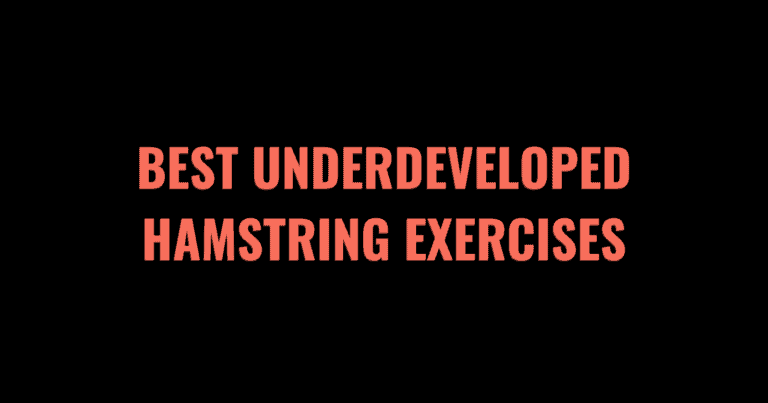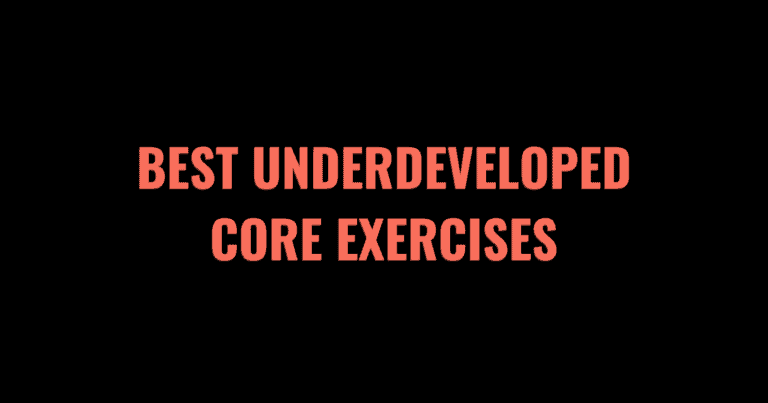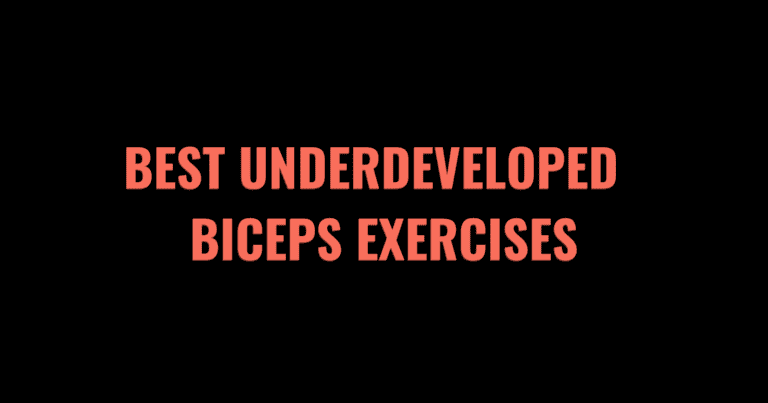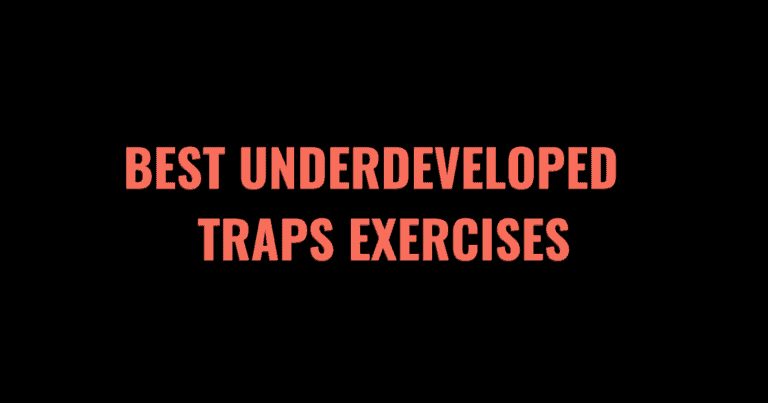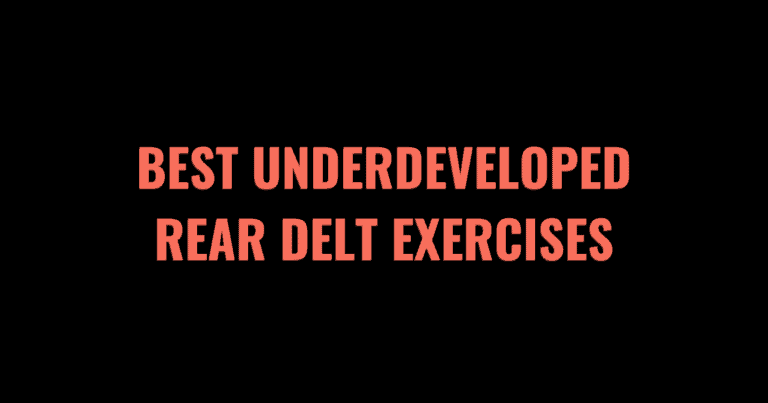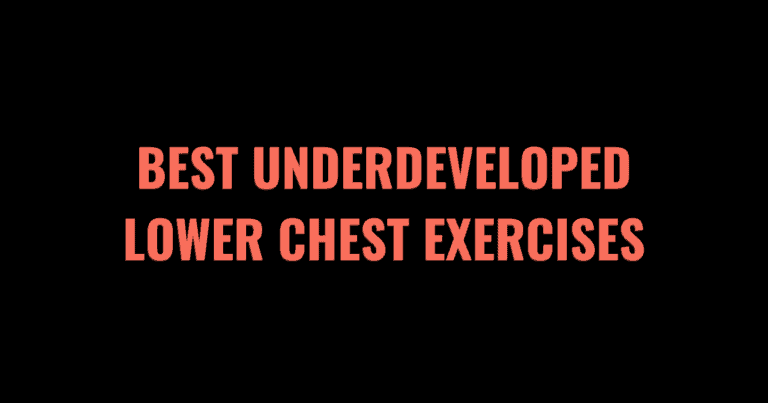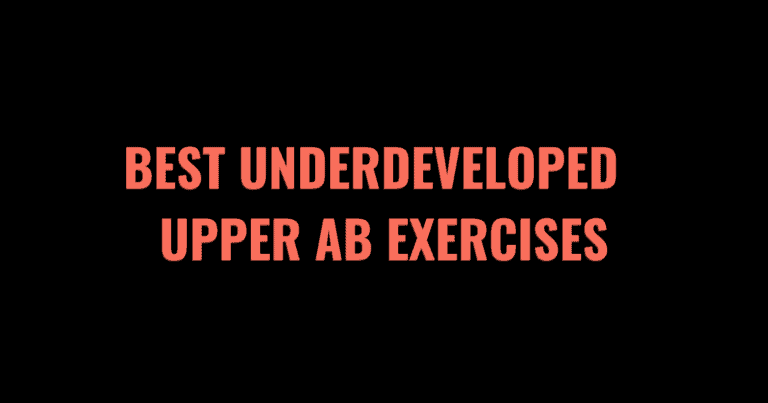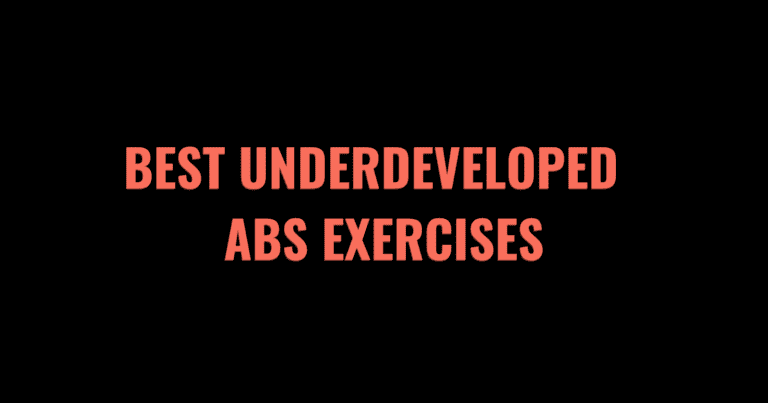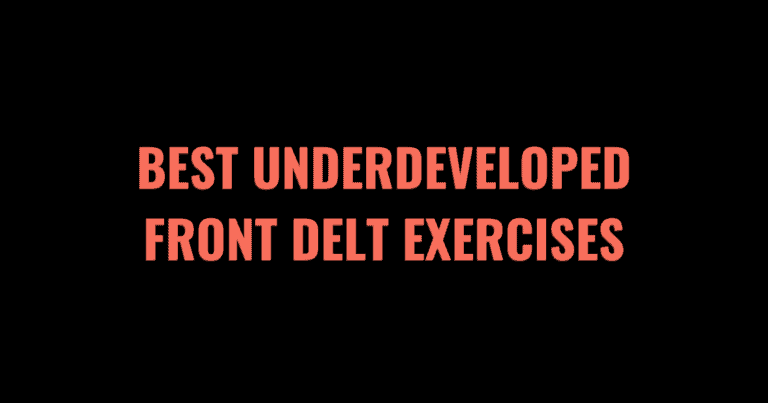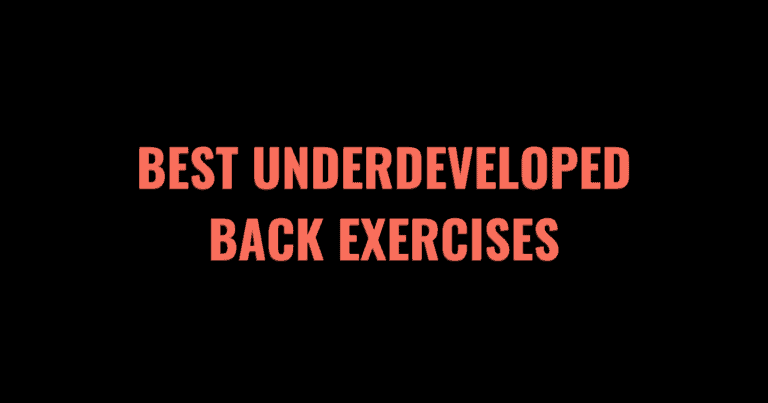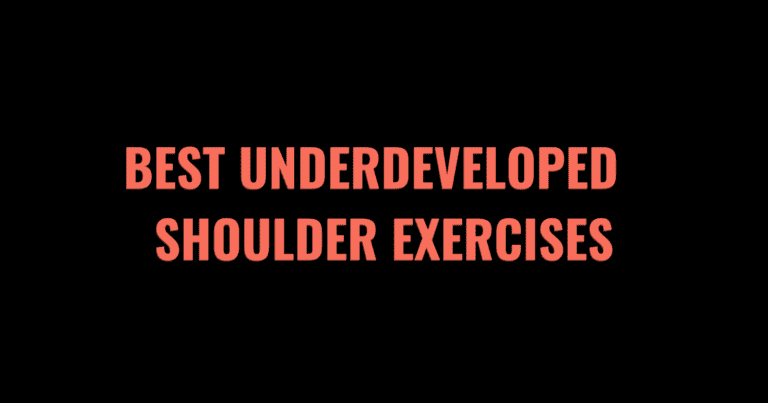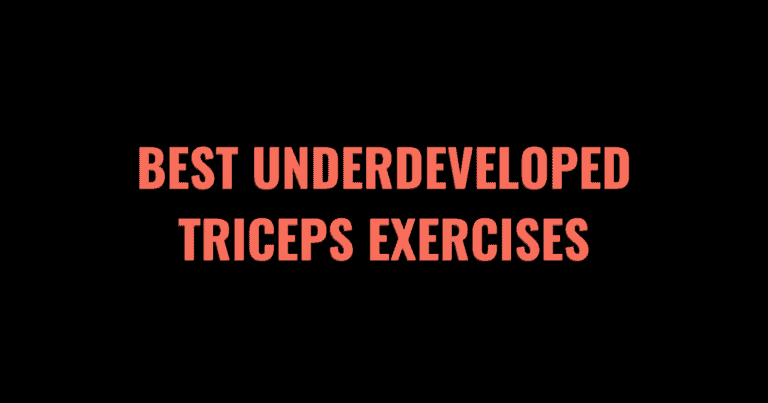Do you want to build a strong core but aren’t sure which exercises to choose? Perhaps you’ve been doing crunches, sit-ups, and leg raises for months without seeing the abdominal strength and definition you desire.
The obliques (internal and external) are a crucial but often neglected upper body muscle group that controls spinal rotation, stabilizes the spine and hips, and gives your torso a v-shaped taper.
We’ll detail the best exercises and training tips to fire up your internal and external oblique muscles and give you the strong, chiseled core you always wanted.
The 7 Best Ways to Grow Underdeveloped Obliques
Weak obliques happen due to focusing your core training on the rectus abdominis or the visible six-pack section of your abs. Your obliques are a vital muscle group that stabilizes rotational movements, controls forward bending, and aids in maintaining an upright posture.
You can strengthen weak obliques by including more targeted oblique exercises, prioritizing stabilization and anti-rotational core work, bracing your core during functional movements, and practicing diaphragmatic breathing.
The 7 Best Ways to Strengthen Weak Obliques
- Include targeted oblique exercises
- Do anti-rotational core stability training
- Brace your core during everyday activities
- Focus on heavy compound exercises
- Increase intensity by adding weight
- Increase your oblique training frequency
- Practice diaphragmatic breathing
Table of Contents
- 0.1 1. Include targeted oblique exercises
- 0.2 2. Do anti-rotational core stability training
- 0.3 3. Brace your core during everyday activities
- 0.4 4. Focus on heavy compound lifts
- 0.5 5. Increase your intensity by adding weight
- 0.6 6. Increase your oblique training frequency
- 0.7 7. Practice diaphragmatic breathing
- 1 The 12 Best Exercises to Strengthen Weak Obliques
- 2 What are Underdeveloped Obliques?
- 3 Oblique Muscle Anatomy
- 4 Oblique FAQs
- 5 Grow Underdeveloped Muscle Groups
- 5.1 The 8 Best Ways to Grow Bigger Hamstrings
- 5.2 The 8 Best Ways to Build an Underdeveloped Core
- 5.3 The 8 Best Ways to Grow Bigger Biceps
- 5.4 The 8 Best Ways to Grow Bigger Traps
- 5.5 The 7 Best Ways to Grow Bigger Rear Delts
- 5.6 The 8 Best Ways to Grow a Bigger Lower Chest
- 5.7 The 8 Best Ways to Grow Bigger Upper Abs
- 5.8 The 8 Best Ways to Strengthen Abs
- 5.9 The 8 Best Ways to Grow Bigger Front Delts
- 5.10 The 8 Best Ways to Grow a Bigger Back
- 5.11 The 8 Best Ways to Grow Bigger Shoulders
- 5.12 The 8 Best Ways To Grow a Bigger Upper Chest
- 5.13 The 5 Best Ways to Grow Bigger Triceps
1. Include targeted oblique exercises
If you want to achieve a v-tapered lower abdomen and build thicker, fuller obliques, don’t just target the rectus abdominus (RA). The RA, the visible six-pack section of your abs, is the most prominent portion of your core and sits between the two hemispheres of your obliques.
To build stronger obliques for functional fitness and a more muscular torso, prioritize exercises that work the obliques, like Russian twists, ab rollouts, and Pallof presses. Side bends and side planks are also great exercises that force the obliques to contract to control the lateral flexion of your torso.
2. Do anti-rotational core stability training
Your obliques have two essential jobs: permitting, controlling, or resisting trunk and spinal rotation. Exercises like Russian twists and twisting hanging knee raises force the obliques to contract to rotate laterally (side to side). These movements are oblique rotational exercises.
Anti-rotational exercises work oppositely. They contract to prevent unwanted or excess twisting of the spine, protecting your joints and spinal cord. Examples of effective anti-rotational oblique exercises are Pallof presses, where you squeeze your core to resist the band or cable pulling you to the side.
Single-arm farmer’s carries and unilateral suitcase deadlifts are also excellent for the obliques. They build total body strength and drive the obliques to keep your torso upright against the weight pulling you toward the ground on one side.
3. Brace your core during everyday activities
Injuries don’t just happen at the gym. Weak or unstable obliques can lead to back pain or injury when performing daily activities that involve twisting under load. Most people with sedentary jobs spend long stretches of time seated with their core inactive, leading to weak or atrophied obliques.
Training for stronger obliques will only benefit you if you remember to brace your entire core when you carry things, run, jump, kick, or throw. Severe pain and injury can result from surprisingly low-effort activities, especially with age. Bracing your core will also build up additional muscular strength and core endurance that translates to better lifting.
4. Focus on heavy compound lifts
Targeted abdominal exercises alone aren’t enough to build bigger, more muscular obliques. Heavy compound exercises like deadlifts, squats, lunges, pull ups, and pushups engage your obliques to stabilize your torso and control the movement.
Your core forms the foundation of strength throughout your entire body. Intense lifting that recruits multiple muscle groups engages every muscle in your core, provided you perform them correctly. Compound exercises may also help reduce body fat, revealing the abdominal muscles underneath.
Functional movements like running and compound lifts are also effective at recruiting your core so that you can build abdominal and oblique strength without direct ab training. However, if you have specific aesthetic or hypertrophy goals that require bulky obliques, you should start including higher-intensity oblique training at least three times a week.
5. Increase your intensity by adding weight
You can get a great core workout using just your body weight, but if you want to see serious muscle growth, adding extra resistance will help. If your goal is a slimmer waist, use this approach with caution, as adding mass to the oblique muscles may increase bulkiness over time.
But if you’re after bulkier, ropy obliques that fill out the sides of your upper body, experiment with added resistance for more intensity. Use weighted oblique exercises like dumbbell side bends, weighted side planks, and suitcase deadlifts to progressively overload the muscle fibers and stimulate growth.
6. Increase your oblique training frequency
The obliques don’t need as much volume as larger muscle groups like the quads or glutes, but if you’ve already tried the above strategies and still have lagging obliques, more direct training can help.
The core muscles are designed for everyday use, so rather than doing a massive amount of core work in one session, add a few effective oblique exercises at the end of most of your training sessions to build their size, strength, and endurance.
In your weekly abdominal training plan, incorporate some of the oblique exercises listed below at least three times to build a more balanced, muscular core.
7. Practice diaphragmatic breathing
Your obliques work closely with your diaphragm, so you can strengthen your core by doing deep, conscious breathing exercises. One study found that deep breathing from an upright seated position increased internal oblique muscle activity and improved lumbopelvic stability.
Slumped posture when sitting for just one hour has been linked with internal oblique (IO) muscle fatigue, making them weaker and more prone to injury. Deep, conscious, diaphragmatic breaths increase postural awareness and engage your core.
Most people breathe into their chest and shoulders. Breathing deeply into the diaphragm eccentrically lengthens the transverse abdominus and obliques. With every full exhale concentrically squeeze your deep core muscles.
If you’re struggling with weak obliques, practice meditative seated breathing exercises with proper posture, or head to a yoga class for an active rest day to strengthen your obliques.
The 12 Best Exercises to Strengthen Weak Obliques
- V-Sit Russian Twists
- Pallof Presses
- Woodchoppers
- Lying Side Crunches
- Single Arm Farmers Carries
- Ab Wheel or Barbell Roll-Outs
- Suitcase Deadlifts
- Hanging Twisting Knee Raises
- Side Planks
- Bicycle Crunches
- Mountain Climbers
- Standing Dumbbell Side Bends
What are Underdeveloped Obliques?
Underdeveloped obliques occur due to not training your core effectively or only focusing on the rectus abdominus. Weak obliques mean your spine and trunk have less strength and stability for functional movement patterns like bending to the side, rotating laterally, and forward spinal flexion.
Signs that your oblique muscles are underdeveloped include swaying from side to side when walking, tight hips, lower back pain, poor posture, and inability to control the transfer of power from your legs to your trunk.
Oblique Muscle Anatomy
Your obliques are one of four main muscles that comprise your abdominals. The two layers lie directly on top of one another and are called the internal and external obliques. The external oblique is bigger and thicker than the internal oblique, which spans from the iliac crest to the rib cage.
The muscle fibers of the obliques run in a diagonal direction from your outer ribs toward your pelvis. Your internal and external obliques cooperate to stabilize the spine, control lateral bending and rotation, and flex the spine forward to bring the ribs and pelvis closer together, such as when doing crunches.
Internal obliques are highlighted in green in the above image—source: Kenhub.
External obliques are highlighted in green in the above image—source: Kenhub.
Oblique FAQs
How often should you train your obliques?
Unlike other muscle groups, you don’t need to worry about overtraining your obliques. Your core muscles have excellent endurance and recovery speed, so you can train your obliques and abdominals daily without needing a recovery day.
Higher frequency training is helpful if you’re struggling with lagging abdominals. Add a few sets of effective oblique exercises at the end of your regular gym sessions to keep seeing gains.
How much intensity is needed to build stronger obliques?
You may be surprised to learn that zero sets of direct abdominal work are required to build muscle mass and strength. However, this only applies if you already do enough volume and intensity of heavy compound lifts like shoulder pressing, squatting, and deadlifting.
Many successful bodybuilders have impressive oblique development without ever doing a single crunch or side plank, provided their body composition comprises low enough body fat to see abdominal definition.
We recommend checking out the training volume landmarks guide for muscle growth to ensure your overall training plan includes optimal intensity for hypertrophy throughout your body, including your obliques.
Your abs respond best to a mixture of intensities ranging from 30-85% of your one-rep max. For most people, this means using a weight you can lift for 5 to 30 reps on your first set if taken to failure. You should split your weekly oblique training volume into high, moderate, and low-intensity sets with appropriate rep ranges to progressively overload the muscle fibers.
What is the ideal rep range for training the obliques?
Optimal abdominal training includes a combination of low-rep (5-10), moderate-rep (10-20), and high-rep (20-30+) ranges.
Ideally, you should do about half of your total oblique volume in the moderate rep range and split the other 50% between heavy (5-10 reps) and lighter (20-30 reps) intensities to stimulate the muscle fibers in different ways.
What types of oblique exercises are most effective?
The best exercises for your obliques align with the oblique muscles’ main functions and anatomy. Because the obliques control spinal rotation, exercises like Russian twists, bicycle crunches, and twisting hanging knee raises are great choices. Anti-rotational exercises like Pallof presses and bird dogs also work the obliques to stabilize the twisting motion.
To work the lateral flexion function of the obliques, use side planks and weighted side bends. Challenge your spinal stability with unilateral exercises like single-arm farmer’s carries, and don’t forget classic spinal flexion movements like ab rollouts and mountain climbers.
How do the internal and external obliques work?
The external and internal obliques work synergistically, so you can’t isolate each oblique layer. The obliques always work in unison contralaterally, meaning the right external oblique and left internal oblique work together to create the same movement.
Your obliques work to stabilize the torso, prevent anterior pelvic tilt and poor posture, protect the lumbar spine and control anti-lateral flexion and rotation of the upper body.
Try some of the techniques discussed here to kickstart your oblique growth!
Grow Underdeveloped Muscle Groups
If you enjoyed this post, check out our other guides on how to grow lagging muscle groups.
